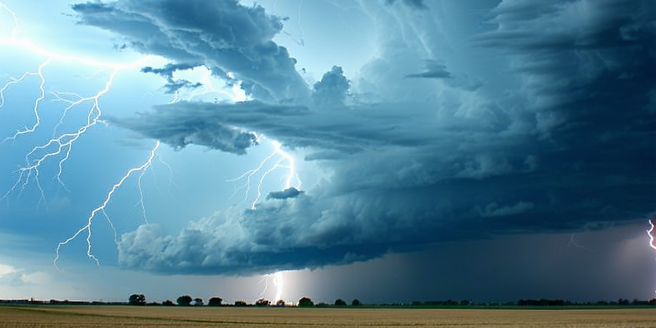
Understanding Thunderstorms: The Basics
Thunderstorms are complex weather systems characterized by the presence of lightning and thunder. They form due to the rapid upward movement of warm, moist air into cooler regions of the atmosphere, resulting in the formation of towering cumulonimbus clouds. Understanding the lifecycle of a thunderstorm, which includes stages of development, maturity, and dissipation, can help individuals anticipate changes in weather conditions. The first stage involves the buildup of cumulus clouds, followed by the mature stage where hail, rain, and wind are most intense. The final stage is marked by the weakening of the system. Knowing how to identify the signs of an approaching thunderstorm, including darkening skies and increasing winds, is crucial for taking timely precautionary measures to ensure personal safety.
Preparing Your Home for Severe Weather
Preparing your home for severe weather is a crucial step in ensuring the safety and well-being of its occupants. Begin by reinforcing your home’s structural elements, such as checking roof integrity and securing loose items in the yard that can potentially become projectiles. Install storm shutters or have plywood on hand to protect windows from strong winds and flying debris. It’s also vital to trim weak or overhanging branches that could fall and cause damage during a storm. Conduct regular maintenance checks on your home’s drainage system to prevent water accumulation and flooding. Keep an emergency kit stocked with essentials like batteries, flashlights, and non-perishable food items. By taking these preparatory measures, you can minimize the risk of damage and ensure a safer environment for yourself and your loved ones.
Essential Safety Gear for Thunderstorms
Equipping yourself with essential safety gear is a fundamental part of preparedness for thunderstorms. Basic gear includes a sturdy flashlight with spare batteries to navigate in case of power outages. A battery-operated NOAA weather radio is invaluable for receiving up-to-date weather alerts and emergency information. Waterproof gear, such as raincoats and boots, should be available to keep you dry, minimizing the risk of illness from prolonged exposure to wet conditions. A fully stocked first aid kit is necessary to treat any injuries that could occur. Additionally, portable phone chargers can ensure you remain connected in case of emergencies. Having these items readily available and understanding how to use them efficiently can significantly enhance your safety during and after a thunderstorm.
Staying Safe While Traveling During a Storm
Traveling during a storm poses significant risks, and safety precautions should be a top priority. Before leaving, check weather forecasts and road conditions to avoid hazardous routes or areas prone to flooding. If driving is necessary, reduce speed and increase the distance between your vehicle and others on the road to prevent accidents caused by reduced visibility or slippery surfaces. Avoid crossing bridges that may be compromised by rising water levels and stay clear of low-lying areas. It is also essential to have an emergency kit in your vehicle, including snacks, water, blankets, and a fully charged cellphone. Stay informed by listening to weather updates via a car radio or mobile app, and don’t hesitate to seek shelter if conditions worsen.
Emergency Plans for Families
Creating and implementing a thorough emergency plan for your family is crucial in ensuring everyone’s safety during a thunderstorm. Start with assembling an emergency kit containing food, water, medications, and contact information. Develop a communication strategy to stay in touch with each other, including identifying a reliable out-of-state contact who can assist in relaying messages. Establish a safe meeting location in case evacuation becomes necessary, and ensure all family members are familiar with the route to get there. Conduct regular drills to practice your emergency procedures, ensuring everyone knows their roles and responsibilities. It’s also important to understand community alert systems and to teach children how to recognize warning signs. By fostering preparedness and communication, families can safely navigate the challenges of severe weather.
Post-Thunderstorm Safety Measures
Following a thunderstorm, it’s essential to prioritize safety as you assess and recover from potential damages. Start by checking for immediate hazards, such as downed power lines or structural damage, and report these to local authorities. Avoid walking or driving through floodwaters, as they may conceal hidden dangers like sharp debris or toxic materials. Inspect your home for any signs of damage, including roof leaks or cracked foundations, and photograph these for insurance claims. Keep electrical appliances turned off until you’re certain they haven’t sustained water damage and your home is safely dry. Ensure that your family stays informed about ongoing weather alerts and potential secondary storms. By taking these precautionary steps, you can limit the risks and ensure a safe transition back to daily routines.
